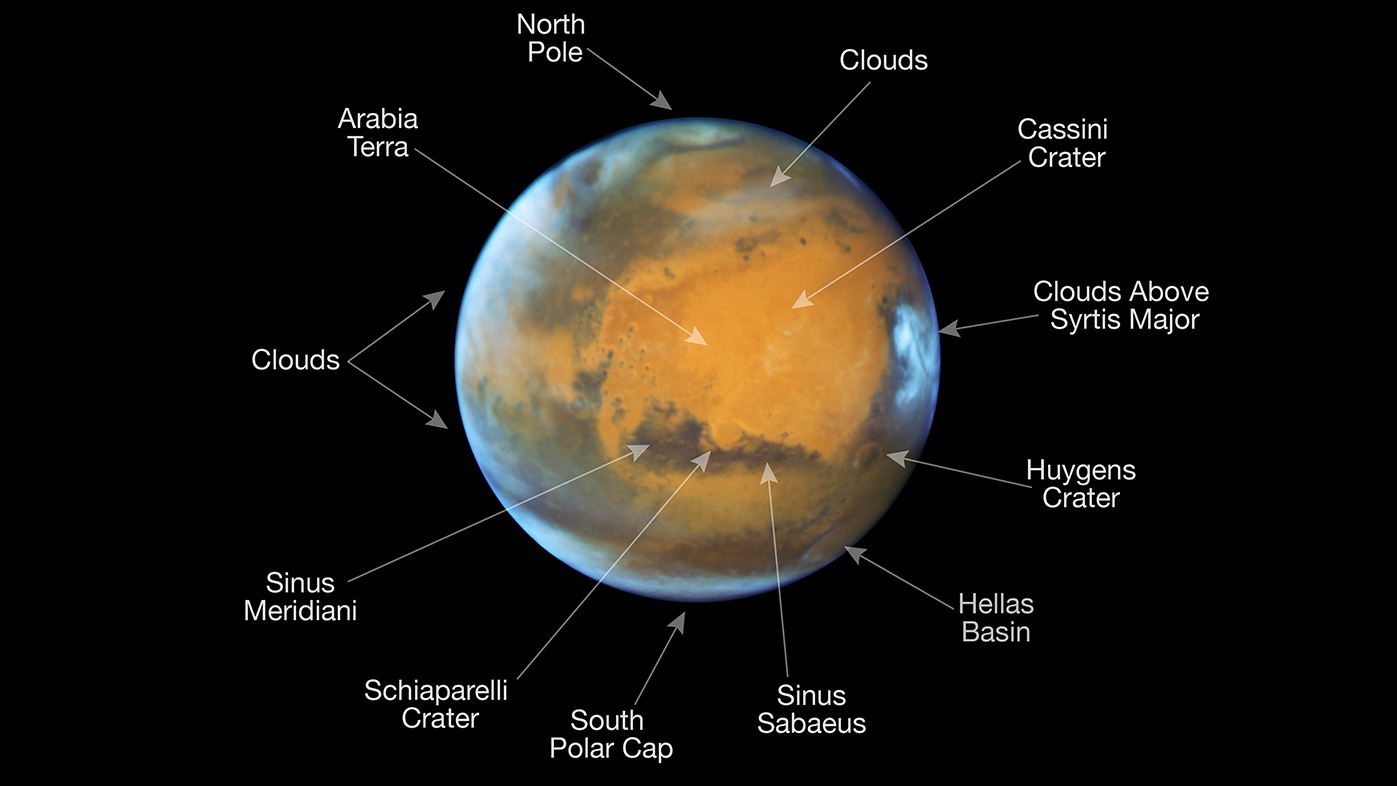Hubble just snapped an incredible close-up of Mars
What a good lookin' planet

The Hubble Space Telescope, like that guy in the office who owns a DSLR, has been roped in to take a few photos in advance of an important event.
In this case, it's Mars' closest approach to the planet Earth for 11 years - which will take place on May 30. Before that, on 22 May, the Red Planet will line up in precisely with the Earth and the Sun so that its Earth-facing hemisphere is fully illuminated - an act of stellar ballet known as 'opposition'
In one of the photos taken by Hubble (above) you can see a lovely selection of the Red Planet's features, from the ancient lava flows of Sinus Sabaeus to the enormous, ancient shield volcano of Syrtis Major - one of the planet's first-identified features in the 17th century.
Astronomer Christiaan Huygens used it to make the first measurements of Mars' rotation rate.
While Mars' atmosphere is about 100 times thinner than the Earth's, it can still support clouds. Over the southern polar cap in the photo, where it's currently winter, you can see an extended blanket of clouds, as well as a wispy cloud extending at least 1,000 miles in the mid-northern latitudes of the planet.
This hemisphere also contains the landing sites of a bunch of Nasa Mars missions, including Viking 1 (in 1976), Mars Pathfinder (in 1997) and the still-operating Opportunity rover. The landing sites of the Curiosity rover and the lost Spirit rover are on the other side of the planet.
Long Distance Relationship
Unlike the Moon, which stays at a fairly constant distance as it orbits our planet, both Mars and the Earth orbit the Sun - meaning their distance varies dramatically. At their furthest, the two planets can be more than 249 million miles apart. At their closest? Less than 35 million.
Get daily insight, inspiration and deals in your inbox
Sign up for breaking news, reviews, opinion, top tech deals, and more.
Close approaches happen roughly every two years (because a Martian year is about twice as long as an Earth year).
But the distances change because both orbits are tilted slightly with respect to each other. There's also a little gravitational influence from the other planets in the solar system.
This time around, the closest approach will be about 47 million miles - much less than the 63 million miles of the 2012 close approach, but more than the 2003 distance of 34.6 million miles, which was the closest in nearly 60,000 years. It won't be that close again until the year 2287.
Colony Concerns
By then, we'll hopefully have a human colony on Mars, and that colony will be paying close attention to these distances. When the planets are in their optimal positions, it still takes about nine months to make the journey from Earth to Mars. When they're not, it's a hell of a lot longer.
As such, pretty much all to-and-fro traffic with any potential Mars colony will be stuck to a 21-month cycle of nine months to get there, three months there and nine months back. The schedule of departure and arrival times has already been calculated for hundreds of years into the future.
So if you were one of the first Mars colonists and you wanted to come back to Earth, you wouldn't want to oversleep and miss your flight. You could be waiting two years for the next departure.
